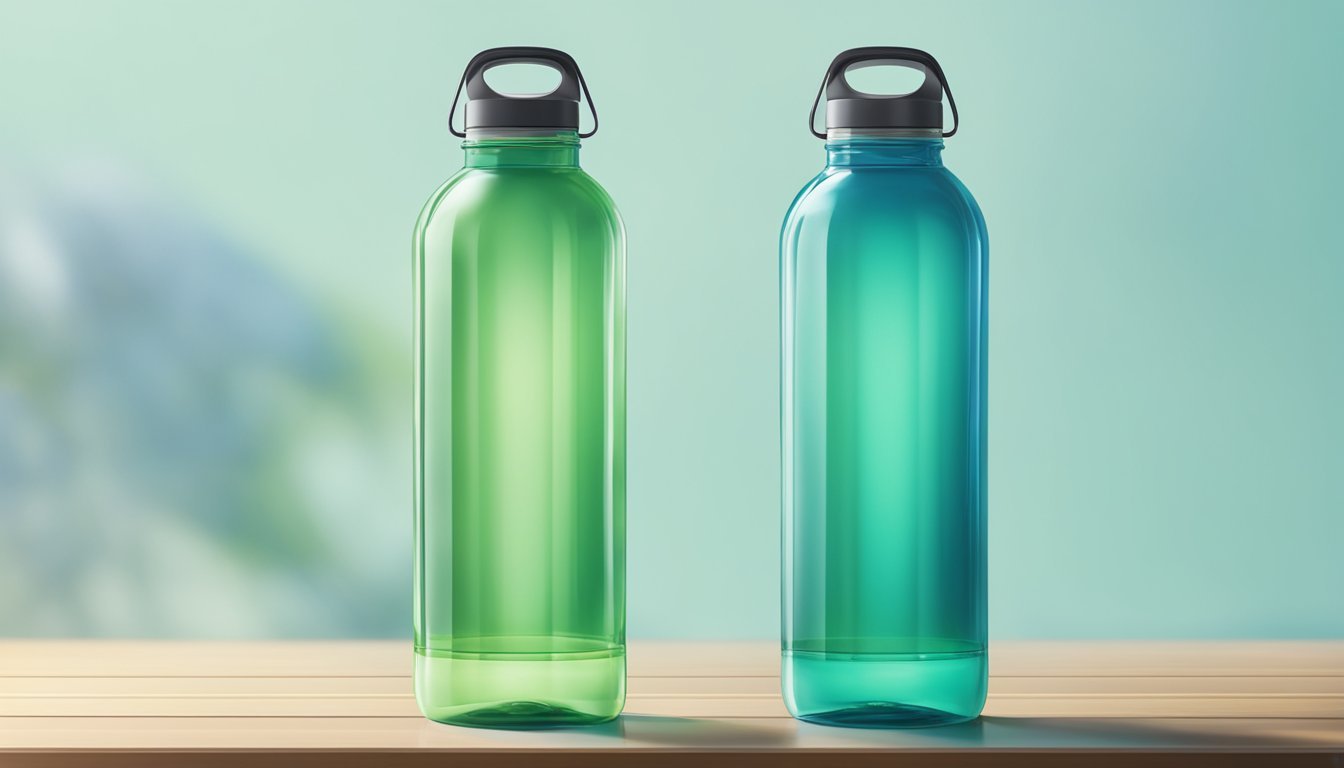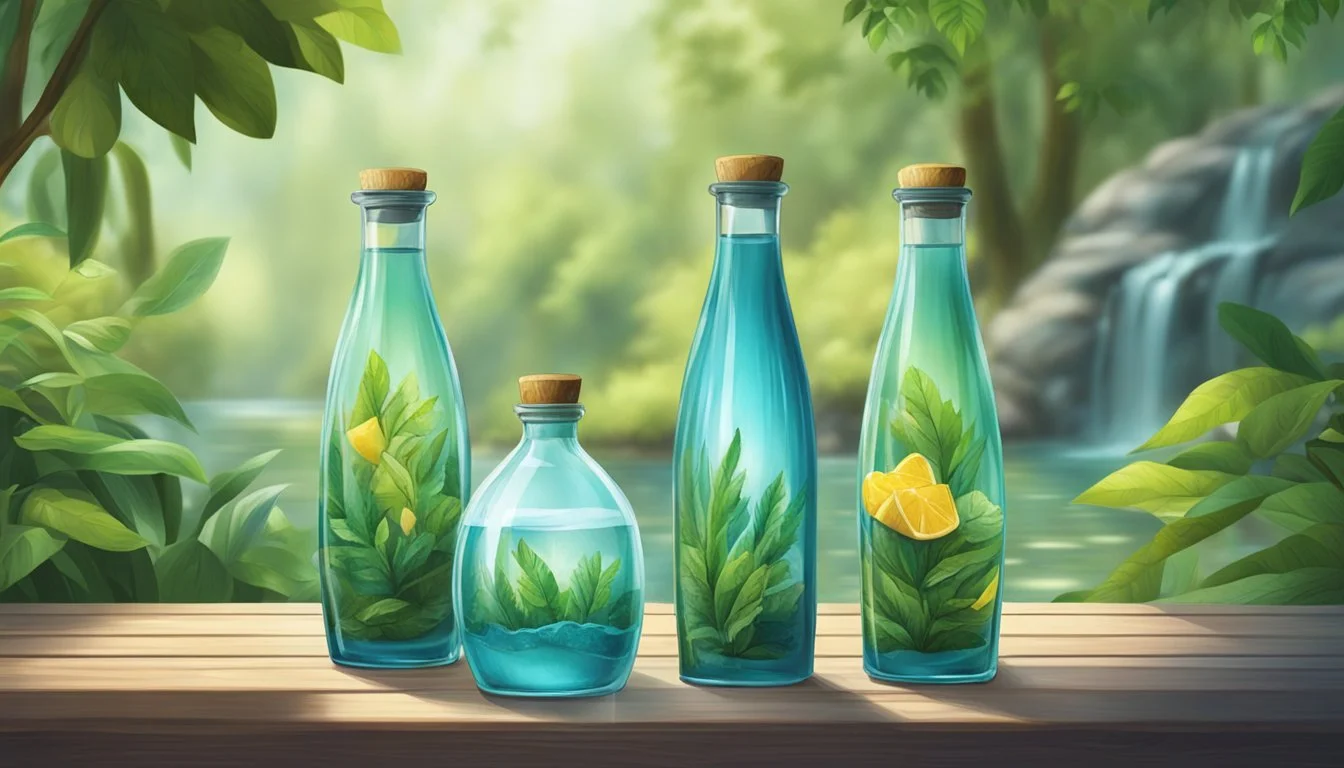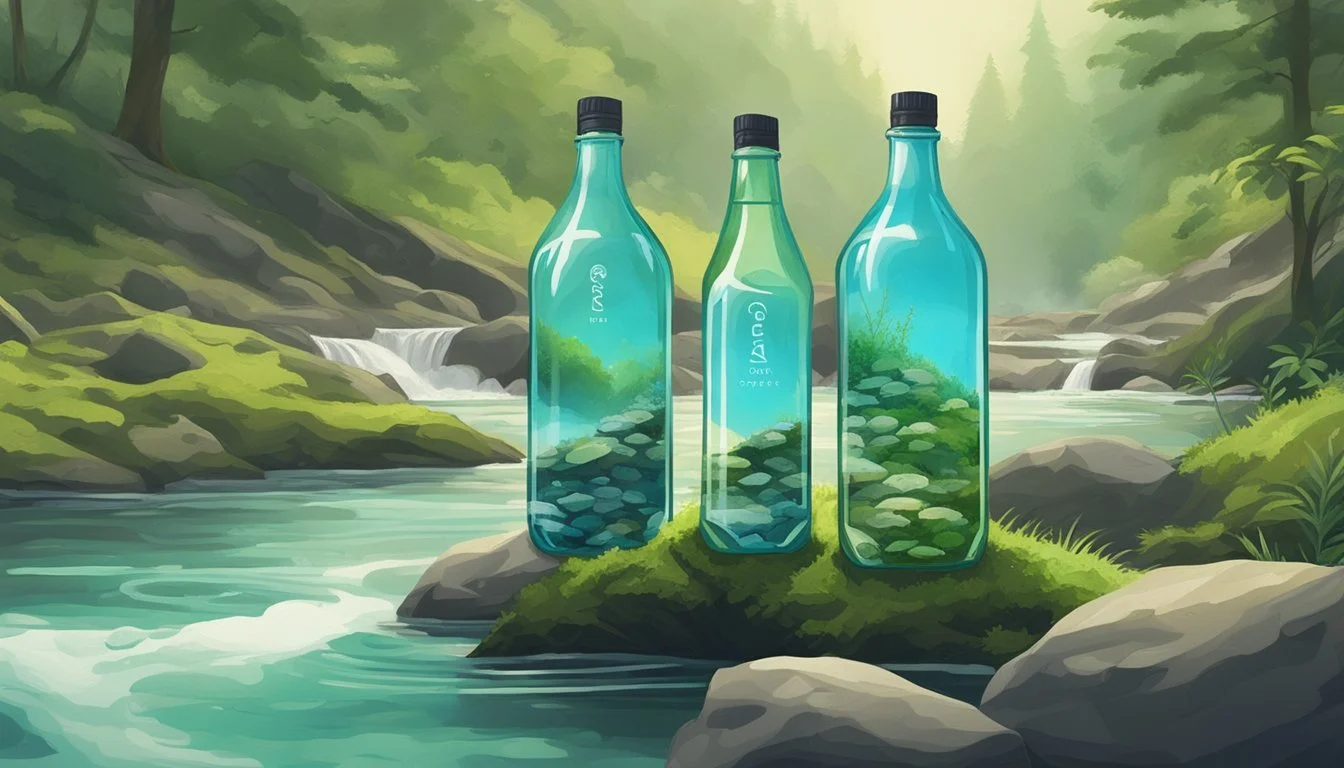Aqua Carpatica vs. Ophora
Comparative Analysis of Bottled Water Quality
Choosing the right bottled water can be overwhelming given the vast market options. Two brands that often stand out are Aqua Carpatica and Ophora. Both offer distinctive features that appeal to different customer needs.
Aqua Carpatica is renowned for its naturally nitrate-free content and low sodium levels, making it a health-conscious choice for many. On the other hand, Ophora has carved a niche with its oxygen-enriched water, appealing to those seeking enhanced hydration and potential wellness benefits. Each brand brings unique qualities to the table, which we will explore in detail to help you decide which is better suited for your needs.
As bottled water becomes an integral part of daily life, understanding the specific benefits of each brand is crucial. Whether your priority is purity or enhanced hydration, this comparison will guide you in making an informed choice between Aqua Carpatica and Ophora.
Origin and Source
Aqua Carpatica and Ophora Water are bottled at their respective sources to ensure the highest quality. Aqua Carpatica hails from the pristine Carpathian Mountains in Romania, while Ophora Water is sourced from select locations in the USA.
Aqua Carpatica: Carpathian Mountains
Aqua Carpatica is extracted from the Carpathian Mountains' natural springs in Romania. This region is renowned for its untouched natural environment, contributing to the purity of the water. The springs are part of the last wild forest of Europe, where groundwater is shielded from industrial pollutants.
The water from these springs is nitrate-free and low in sodium, perfect for those seeking natural hydration without additives. The pristine nature of the source ensures a high standard of water quality. Each bottle of Aqua Carpatica carries the integrity of these ancient springs, offering consumers a taste of pure mineral-rich water.
Ophora Water: American Source
Ophora Water is sourced in the USA, utilizing advanced purification processes to provide clean, high-quality water. The specific locations of these sources include strategically chosen areas known for their clean environment and groundwater reliability.
Ophora emphasizes its proprietary purification, which includes oxygenation and ionization, distinguishing it from other bottled waters. This method retains essential minerals while ensuring the absence of contaminants. By leveraging advanced technology with natural sources, Ophora maintains a balance between purity and mineral content, offering a distinct hydration experience.
Composition and Purity
Aqua Carpatica and Ophora are popular choices among bottled water brands due to their distinct compositions and high purity standards. This section will provide an in-depth comparison focused on mineral content, nitrate levels, and pH balance.
Mineral Content and Benefits
Aqua Carpatica and Ophora both offer beneficial minerals, though their profiles differ. Aqua Carpatica contains significant amounts of calcium and magnesium, crucial for bone health and metabolic functions. Specifically, Aqua Carpatica's mineral content includes:
Calcium (Ca): 62 mg/L
Magnesium (Mg): 15 mg/L
Sodium (Na): 3 mg/L
Potassium (K): 2 mg/L
Ophora, known for its enriched oxygen levels, also offers essential electrolytes and minerals but with a slightly different composition. It features:
Calcium (Ca): 40 mg/L
Magnesium (Mg): 18 mg/L
Sodium (Na): 5 mg/L
Potassium (K): 4 mg/L
Both brands provide a balanced intake of minerals and electrolytes, making them suitable for hydration and overall health.
Nitrate Levels and Water Safety
Nitrate levels are a critical factor in water safety. Aqua Carpatica prides itself on being nitrate-free, a unique attribute that appeals to consumers looking for pure natural mineral water. High nitrate levels can pose health risks, particularly for infants and pregnant women, making Aqua Carpatica a safer option.
Ophora also adheres to stringent safety standards, maintaining low nitrate content. It ensures that nitrate levels are well within the acceptable limits set by health regulations, providing peace of mind for health-conscious consumers.
The nitrate content in both brands demonstrates their commitment to delivering safe and superior quality water.
pH Level and Alkalinity
The pH level is important for determining water's alkalinity and overall health benefits. Aqua Carpatica boasts a neutral to slightly alkaline pH level, ranging between 7.9 and 8.2. This level is beneficial for neutralizing acidity in the body, promoting better hydration.
Ophora, on the other hand, features a more alkaline profile with a pH level of around 8.5. Alkaline water enthusiasts believe that higher pH levels can help balance the body's pH and improve overall wellness.
Both Aqua Carpatica and Ophora provide alkaline water, catering to individuals seeking the benefits of higher pH levels for enhanced hydration and health support.
These distinctions in mineral content, nitrate levels, and pH balance highlight the strengths of both Aqua Carpatica and Ophora, helping consumers make informed choices based on their hydration needs and health goals.
Health and Hydration
When comparing Aqua Carpatica and Ophora, it's essential to consider their effectiveness in hydration, overall impact on health and wellness, as well as their suitability for pregnant individuals.
Hydration Efficiency
Aqua Carpatica boasts a naturally nitrate-free composition and low sodium levels. This makes it a suitable option for those seeking effective hydration without added minerals or contaminants. On the other hand, Ophora, often alkaline, claims to enhance hydration due to its higher pH levels.
The presence of electrolytes like bicarbonate in Ophora may support more effective rehydration, particularly after exercise. However, both waters excel in providing a clean, fresh taste, making them excellent choices for daily hydration.
Impact on Wellness and Lifestyle
Aqua Carpatica offers a blend of silica, bicarbonate, and sulfate, contributing to its health benefits. Silica is known to aid skin, hair, and nail health, while bicarbonates can help maintain acid-base balance in the body. These components make Aqua Carpatica a good option for those focused on wellness.
Ophora water, often infused with oxygen and additional minerals, is marketed towards those looking for enhanced wellness benefits. It is suggested to support increased oxygen levels and improved recovery times, beneficial for active lifestyles. Both options contribute positively to a healthier lifestyle through their unique compositions.
Suitability During Pregnancy
Pregnant individuals need to be cautious about their water sources. Aqua Carpatica's nitrate-free and low-sodium content makes it an attractive option during pregnancy, reducing the risk of hypertension. Its natural mineral content supports overall maternal health without introducing potentially harmful contaminants.
Ophora's alkaline properties and additional minerals might also be beneficial during pregnancy, helping to maintain hydration and balance. However, the higher pH and different mineral profile mean pregnant individuals should consult with healthcare providers to ensure suitability. Both waters provide safe hydration options with potential benefits for pregnancy-related wellness.
Taste Profile
Aqua Carpatica and Ophora bottled waters have distinct taste profiles, influenced by their mineral content and sources. This overview covers views from water sommeliers, consumer taste tests, and considerations of aftertaste to help you decide which water might suit your palate best.
Water Sommelier Insights
Water sommeliers often describe Aqua Carpatica as having a clean, crisp taste with minimal aftertaste. It is praised for its natural, smooth flavor, which is the result of it being nitrate-free and low in sodium. This makes it an excellent choice for those who prefer a subtle, refreshing finish.
Ophora, on the other hand, is highlighted for its silky texture and balanced mineral content. Sommeliers note a slight sweetness, likely due to its unique electrolysis process that enhances the water’s purity and oxygen levels. This specialized process results in a distinctive, oxygen-rich taste that some may find more invigorating.
Consumer Taste Tests
In various consumer taste tests, Aqua Carpatica frequently emerges as a favorite for its refreshing and delicate flavor profile. It is often described as thirst-quenching and light on the palate, making it a standout for everyday hydration needs. One test noted its favorable price at 7.9p per 100ml, translating to a balance of quality and affordability.
Ophora usually appeals to consumers seeking a more luxurious water experience. Its rich mineral composition and slight alkalinity lend a more complex flavor that is both smooth and slightly sweet. Testers often appreciate its texture and the clean, revitalized feeling it provides, although some might prefer a less complex taste for daily drinking.
Aftertaste Considerations
Aqua Carpatica boasts a minimal aftertaste, which enhances its appeal for many drinkers. Its pure, clean finish is a result of natural filtration processes, positioning it as a top choice for those who prefer a neutral palate cleanser.
Ophora, in comparison, has a distinctive but mild aftertaste attributed to its higher mineral and oxygen content. While some consumers enjoy the slightly lingering sweetness and enhanced oxygenation effects, others might find it a bit too pronounced, especially if they favor a more neutral aftertaste.
Both Aqua Carpatica and Ophora offer unique experiences, catering to different preferences in taste and aftertaste. These differences are crucial for consumers to consider when selecting their preferred bottled water.
Environmental Impact
Aqua Carpatica and Ophora take different approaches to sustainability. The environmental impact of these brands includes packaging choices, carbon emissions, and their efforts in natural filtration and stewardship.
Packaging and Recyclability
Aqua Carpatica prides itself on using 100% recyclable, BPA-free plastic bottles, and glass bottles. These materials are easier to recycle and reduce plastic pollution. Their use of glass bottles appeals to eco-conscious consumers, aiming to lessen dependence on single-use plastics.
Ophora also focuses on environmentally friendly packaging, emphasizing recyclable plastic and glass options. Their BPA-free bottles cater to health and environmental concerns. Both brands aim to provide safer, sustainable options for consumers, but the emphasis Aqua Carpatica places on glass bottles might give it an edge in reducing overall plastic waste.
Carbon Footprint and Sustainability
The production and transport of bottled water significantly contribute to carbon emissions. Aqua Carpatica and Ophora attempt to mitigate this through various measures. Aqua Carpatica sources its water from specific natural springs, reducing transportation emissions compared to imported water.
Ophora, on the other hand, works to offset its carbon footprint by focusing on local sourcing and cutting down long-distance shipping. They also invest in more sustainable production practices. Both brands show a commitment to lowering their CO2 emissions, but Aqua Carpatica's focus on local sources could contribute to a lower carbon footprint.
Natural Filtration and Environmental Stewardship
Aqua Carpatica emphasizes its natural filtration process, which minimizes the need for industrial treatment and preserves the water's purity. Their water is naturally nitrate-free and low in sodium, showcasing their commitment to natural, minimally processed hydration sources.
Ophora invests in advanced filtration technology to deliver clean, oxygenated water. This method reflects a dedication to sustainability and health benefits, though it may involve more energy use compared to purely natural filtration. Aqua Carpatica’s reliance on natural methods promotes a more environmentally friendly approach, aligning with broader ecological goals. Both brands demonstrate a commitment to environmental stewardship, but Aqua Carpatica's methods highlight a deeper focus on preserving natural resources.
Availability and Consumer Convenience
The availability of Aqua Carpatica and Ophora in various retail outlets affects their convenience for consumers. Both brands aim to offer easy access through multiple distribution channels.
Retail Distribution Channels
Aqua Carpatica is widely available in major grocery stores such as Tesco, Whole Foods Market, and As Nature Intended. It can also be found online through Amazon and Ocado, allowing consumers to purchase it conveniently from home.
Ophora, on the other hand, has a more niche market presence. It's primarily available at specialty stores like Harrods and luxury health shops such as Revital. While less commonly found in typical grocery stores, it can also be purchased online via their official website and select high-end retailers.
Both brands offer online purchasing options, increasing accessibility, though Aqua Carpatica has a broader presence in mainstream retail outlets.
Comparative Analysis
Aqua Carpatica and Ophora offer distinct characteristics that contribute to their positions in the premium bottled water market. Comparing their market presence and positioning against other high-end water brands reveals further insights.
Aqua Carpatica vs. Ophora in the Market
Aqua Carpatica, sourced from natural springs in Romania, emphasizes its naturally nitrate-free composition and low sodium content. It appeals to health-conscious consumers seeking purity in their hydration. Sourced from Carpathian Springs SA, Aqua Carpatica targets the niche market concerned with environmental and personal health factors.
Ophora, known for its ultra-purified, oxygen-rich water, focuses on advanced filtration processes to stand out. This Californian brand claims its water promotes better cellular hydration and detoxification. Ophora positions itself as a luxury item, competing on technological advancements rather than just natural purity.
Price and Availability:
Aqua Carpatica: More affordable, with options ranging around $0.92 for 500 mL and $2.29 for 750 mL.
Ophora: Generally higher priced due to its specialized production methods.
Against Other Premium Brands
Comparing Aqua Carpatica and Ophora to other premium brands like Fiji, Evian, Voss, and Acqua Panna highlights their unique attributes.
Aqua Carpatica's absence of nitrates sets it apart. This is a significant factor for consumers wary of chemical contaminants. Brands like Evian from the French Alps and Fiji from tropical aquifers offer mineral-rich profiles but do not focus on nitrate-free claims.
Ophora, with its high oxygen levels, distinguishes itself through innovation. Water brands like Mountain Valley and Crystal Geyser are praised for natural purity, yet do not emphasize the technological enhancements that Ophora does.
Quality and Perception:
Aqua Carpatica: Known for purity and health benefits.
Ophora: Marketed as a wellness product with advanced features.
In conclusion, Aqua Carpatica and Ophora cater to different segments of the premium bottled water market through their unique selling points, from natural purity to innovative technology.







